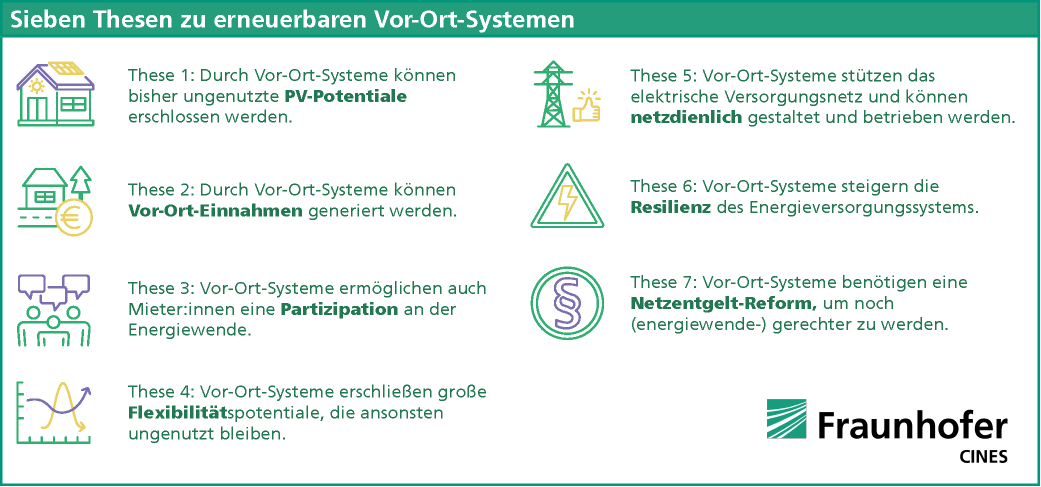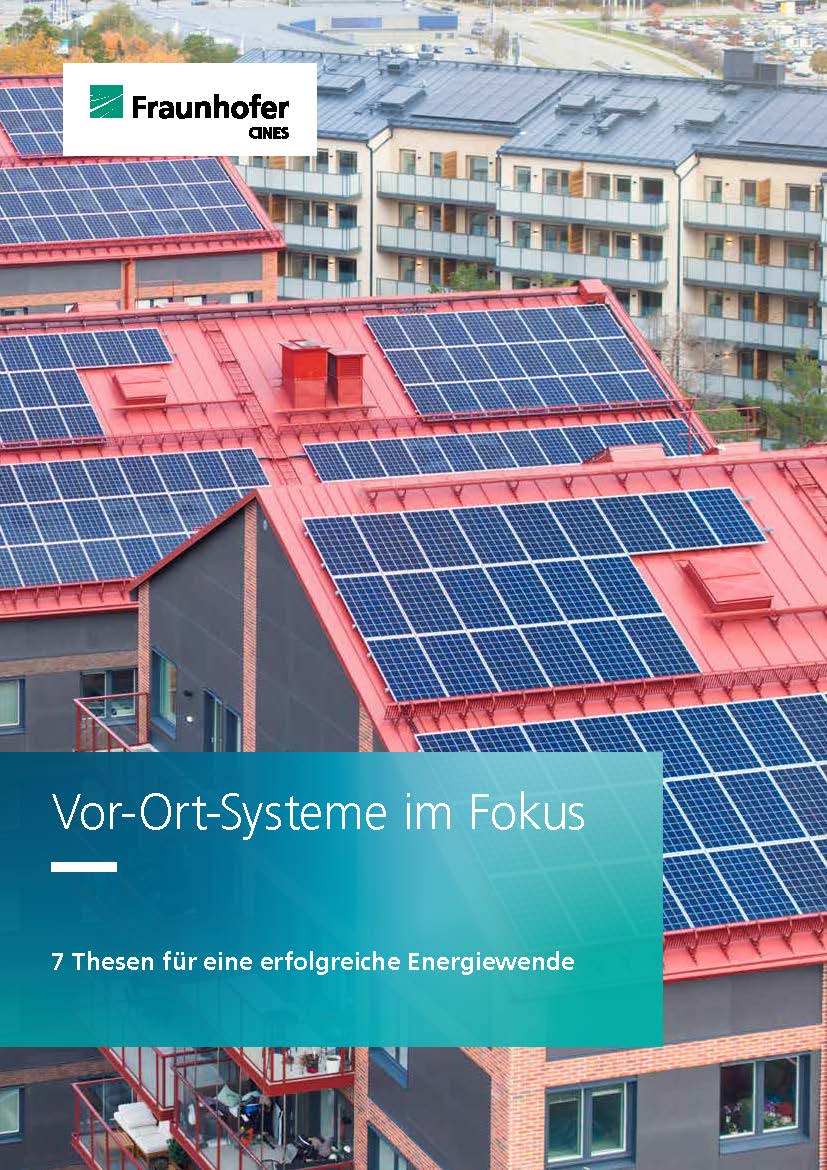Seven theses on strengthening the energy transition with on-site systems
With the boom in balcony solar systems, the expansion of heat pumps and the newly introduced communal building supply, so-called on-site systems are increasingly coming into focus. Such approaches to intelligently generate, store and consume renewable energy in close proximity are not only beneficial for the operators of the systems, but also for the energy transition as a whole. In a new thesis paper, researchers from the Fraunhofer Cluster of Excellence “Integrated Energy Systems” (CINES) examine the technical, economic and social impact of on-site systems.
Various forms of on-site renewable energy systems already exist in Germany today. Established concepts include tenant and regional electricity as well as citizen energy companies, which are usually organized as cooperatives. “The idea of consuming locally generated renewable energy on site is not new in itself. However, increasingly affordable technologies such as balcony solar systems, battery storage, heat pumps and e-mobility, as well as new regulatory frameworks such as the community building supply agreed in Solar Package 1, are giving the topic a completely new dynamic,” says project manager and co-author Dr. Matthias Kühnbach. “We have therefore compiled the current status of our research and further analyses of how on-site systems can contribute to an efficient and participatory energy transition.” The result is seven theses on on-site systems that address both economic and technical as well as social aspects of the energy transition and highlight the advantages, but also the limits of and need for action for on-site systems.
Participatory development of solar potential
In apartment buildings in particular, the extensive development of roof areas for photovoltaics has so far been hampered by administrative and economic hurdles. A profitability analysis by the CINES team shows that tenant electricity and community building supply now offer two concepts that are more economically attractive to investors than conventional full feed-in. “We assume that this will now increase the willingness to develop more roof areas on apartment buildings for photovoltaics (PV),” says Paula Oberfeier, lead author of the thesis paper. She also sees potential for single-family homes to increase their roof coverage with photovoltaic modules, provided that the additional electricity can be marketed in the surrounding area, for which the framework conditions are currently still lacking.
While photovoltaics have so far mainly been used in owner-occupied properties, balcony solar, communal building supply and energy sharing, which will be strengthened in the future, will also give tenants more and more options to actively participate in the energy transition. Due to the high proportion of rental apartments in Germany, the research group anticipates benefits for the acceptance of renewable energy projects. In addition, the decentralized installations also generate various revenues and cost savings that benefit the local economy.
Flexible, grid-friendly and resilient
The CINES researchers also simulated the extent to which the increasing spread of PV systems with battery storage, heat pumps and electric vehicles can also increase the flexibility potential of private households. As a result, they estimate that an average multi-family house of ten parties can increase its connected load by 10 kilowatts (kW) or reduce it by 6 kW in 2030 by shifting electricity consumption or using storage capacities. These cross-sector flexibilities can be used to mitigate load and feed-in peaks and thus stabilize the upstream energy system, for example the local electricity distribution grid. If these operational management methods are also controlled on the grid side, it becomes conceivable to integrate on-site systems into grid operation processes and congestion management.
In the event of disruptions and failures in the upstream energy system, it is ultimately possible to maintain a local basic or minimum supply with on-site systems.
Technical and regulatory framework conditions
In order to successfully mobilize this flexibility, further digitalization of the energy system is technically necessary. However, if more and more households cover an increasing proportion of their electricity requirements through self-consumption, this can lead to an increase in grid charges for all grid customers under the current regulations. In order to avoid this problem, the CINES researchers recommend a reform of the grid fees. In particular, it would be expedient to dynamically align the grid fees with the expected grid load. This would provide an incentive to operate controllable consumers, storage systems and generators in a more grid-compatible manner.
A comparison of various on-site concepts also shows that those concepts that do not involve high administrative hurdles, such as balcony solar systems, are particularly well accepted. “In this respect, we should ensure that future on-site systems are as simple as possible to implement,” emphasizes Paula Oberfeier. “Only with a healthy cost-benefit ratio can we convince people and companies to tap into this valuable, local energy transition potential.”
 Cluster of Excellence Integrated Energy Systems
Cluster of Excellence Integrated Energy Systems
